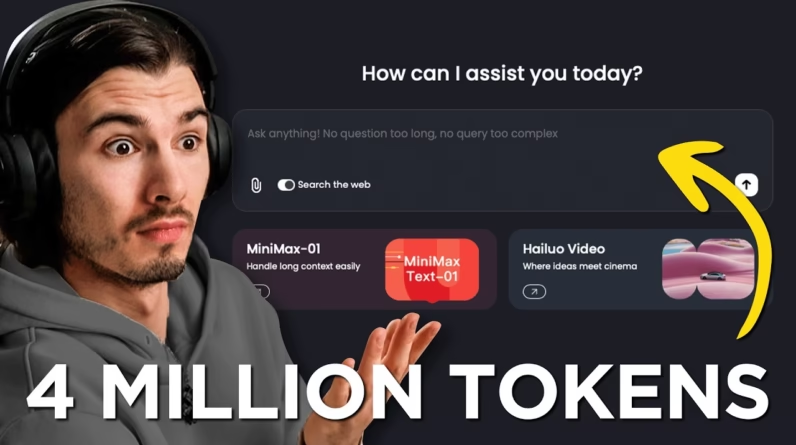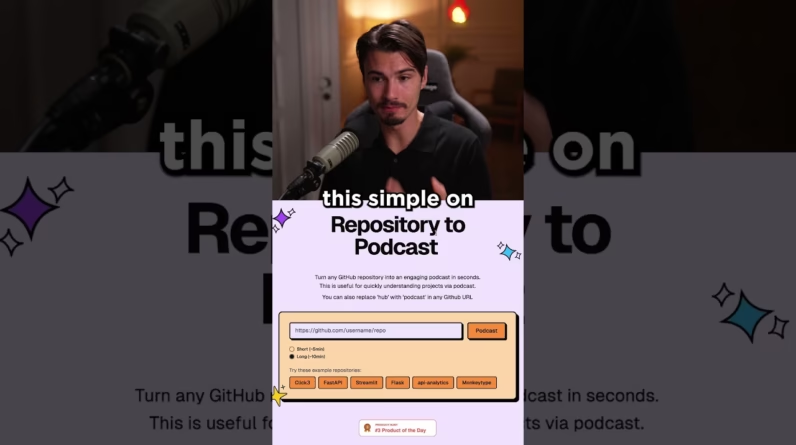
No-Code Millionaires showcases the inspiring journeys of five entrepreneurs who turned their dreams into successful ventures without writing a single line of code. By leveraging powerful no-code tools, they navigated challenges and transformed their ideas into flourishing businesses. Each story highlights the potential of no-code platforms, proving that anyone can launch their own startup, regardless of technical expertise.
This article explores the achievements of Chad, Heidi, David, Jules and Hugo, and Nate. From creating platforms for legal services to personalized supplements and fintech solutions, these innovators demonstrate that success is within reach. Rarely is the path to entrepreneurship so accessible, and the lessons learned from their experiences can motivate aspiring business owners to take action and build their own million-dollar empires.
Table of Contents
The Rise of No-Code Development

Defining No-Code Development
No-code development is a revolutionary approach that empowers individuals without coding skills to create software applications through visual programming interfaces. Instead of writing complex lines of code, you can design, build, and deploy applications using intuitive drag-and-drop tools. This democratization of technology allows anyone—from entrepreneurs to marketers—to turn their ideas into reality without technical barriers, diversifying the landscape of software development.
Trends Leading to No-Code Adoption
The surge in no-code adoption can be linked to several trends shaping the technology and business environments. First, the rapid digital transformation brought on by the pandemic has increased the demand for online solutions, making no-code tools accessible and appealing to those looking to launch products quickly. Additionally, the rise in remote work has fostered innovation and creativity among individuals who wish to solve problems within their industries. Finally, as education and community resources around no-code development grow, more people recognize the possibilities of becoming creators rather than just consumers of technology.
The Democratization of Software Development
No-code tools are leveling the playing field in software development. You no longer need a computer science degree to bring your software ideas to life. This liberation means that diverse voices from various backgrounds can contribute their unique perspectives and solutions, driving innovation in both established industries and new markets. As a result, the software landscape is becoming increasingly rich and varied, offering solutions tailored to niche segments that may have been overlooked in conventional coding environments.
Success Stories of No-Code Millionaires
Chad: Automating Legal Services
Chad’s entrepreneurial journey began with a desire to help automate legal services for a friend. Initially overwhelmed by the complexities and expenses of traditional development, Chad stumbled upon Bubble.io, a no-code app builder. Within months, he launched a legal entity platform that now generates $2.7 million annually. His key takeaway emphasizes the importance of starting small, remaining flexible, and harnessing the power of no-code tools to achieve significant business growth.
Heidi Oja: Transforming Musculoskeletal Health
Heidi, a seasoned researcher in musculoskeletal health, ventured into entrepreneurship without coding skills. Launching “Aware Health,” a platform for non-surgical treatments, she leveraged Bubble and Webflow to scale her business to over $1 million a year. Heidi’s story illustrates that starting with no-code solutions can lead you to later incorporate traditional coding as your business needs evolve.
David Foo: Innovating Job Searches
David Foo’s venture, “Teal,” has helped numerous individuals land their dream jobs. By utilizing a combination of no-code tools such as Bubble and Zapier, David has raised over $1 million for his platform. His experience underscores how accessible it has become to build software businesses without technical skills, making entrepreneurship more attainable than ever.
Jules and Hugo: Personalized Supplements
French entrepreneurs Jules and Hugo identified a gap in the personalized supplements market. They created “Cure,” a subscription service for customized supplements by initially testing their business idea with a minimal prototype. Through smart market validation and leveraging bubble.io, they scaled their company to a remarkable revenue of $100,000 per month. This highlights the significance of validating demand before diving into extensive development.
Nate Washington: A Fintech Visionary
Nate Washington’s journey from homelessness to launching “Coins,” a fintech app, is nothing short of inspiring. By learning Bubble and building a platform that helps users pay off debts using spare change, Nate’s story showcases the life-changing potential of no-code tools. He successfully raised $2.3 million and won a fintech innovation award, proving that with determination and the right tools, anyone can transform their life circumstances.
Key Tools and Platforms
Bubble: Building Complex Applications
Bubble is a highly versatile no-code platform that allows you to design and develop complex web applications with ease. Its drag-and-drop interface and ability to connect with APIs make it an ideal starting point for entrepreneurs looking to bring their ideas to life without writing a line of code.
Webflow: Design-Driven Web Development
Webflow combines design and development in a single platform, enabling you to create visually stunning websites that are fully responsive. Its user-friendly interface allows you to implement custom designs while ensuring your site is ready for SEO and conversions without dealing with traditional coding.
Adalo: Creating Native Mobile Apps
Adalo simplifies the creation of mobile applications by providing an intuitive platform for designing and building native apps. You can swiftly prototype and launch your app without a single line of code, making it an excellent choice for entrepreneurs interested in mobile solutions.
Glide: Turning Spreadsheets into Apps
With Glide, you can convert Google Sheets into functional applications in minutes. This tool is perfect for quickly prototyping ideas and setting up applications that rely on simple data structures, making it an accessible option for users looking to streamline processes.
Zapier: Automating Workflows with Integrations
Zapier is a powerful tool for automating tasks across various applications without needing coding expertise. By integrating multiple platforms, you can streamline workflows, reducing manual work, and enhancing productivity.
Fundamentals of Building Without Code
Identifying Your Idea and Market Need
The first step in your no-code journey is identifying a compelling business idea that meets a specific market need. Conduct research to understand pain points in an industry you’re passionate about, and leverage your expertise to brainstorm innovative solutions that stand out.
Creating a Minimum Viable Product (MVP)
Developing a minimum viable product is crucial in testing your idea with real users. Focus on building a basic version of your application that solves the core problem while eliminating unnecessary features. This will allow you to gather feedback and make data-driven decisions for future iterations.
Iterating Based on User Feedback
Use the feedback gathered from users to enhance your product. Listen closely to their suggestions and pain points to implement meaningful changes. In a no-code environment, you can quickly adapt and pivot your application to better serve your audience.
Leveraging Templates and Pre-Built Components
Many no-code platforms offer a variety of templates and pre-built components that can accelerate your development process. Take advantage of these resources to save time and ensure your app includes essential features from the get-go.
Challenges in No-Code Development
Limitations of No-Code Platforms
While no-code platforms offer numerous advantages, they also come with limitations. You may encounter restrictions in customization and scalability as your business grows. Recognizing these constraints early can help you prepare for a transitioning phase later on.
Learning Curve and Initial Roadblocks
Though designed to be user-friendly, no-code platforms might still pose a learning curve. You may face challenges in understanding how to effectively navigate the tools or optimize your workflow. Patience and persistence are key as you become familiar with the environment.
Scaling and Transitioning to Code
As your application grows in complexity and user base, you might find that no-code platforms don’t fully accommodate your evolving needs. Mapping out a transition strategy to coding may be necessary, requiring a deeper understanding of technical aspects or hiring skilled developers.
Potential for Vendor Lock-In
Another challenge with no-code platforms is the risk of vendor lock-in. Once you build your application on a specific platform, transitioning to another tool may prove difficult. Carefully consider your long-term strategy and ensure you have exit options if needed.
Identifying Opportunities in No-Code
Assessing Market Gaps
Conduct thorough market research to uncover gaps that can be filled by innovative software solutions. This will enable you to leverage your insights and build a product that stands out in a crowded marketplace.
Focusing on Industry-Specific Solutions
Identifying opportunities within specific industries allows you to create tailored solutions that cater to the unique needs of your target audience. By focusing on niche markets, you can increase your chances of success and minimize competition.
Discovering Niche Audiences
In a world where one-size-fits-all rarely works, discovering niche audiences can give you a competitive edge. Create user personas to better understand their needs, preferences, and pain points, which will help you design a solution specifically for them.
Utilizing Data-Driven Decision Making
Implementing data-driven decision-making is crucial when identifying opportunities and shaping your product’s evolution. Use analytics tools to monitor user engagement and gather insights that inform your future strategies.
Resources for Aspiring No-Code Entrepreneurs
Online Courses and Workshops
Numerous online platforms offer courses and workshops tailored to no-code development. These resources provide valuable insights into platform functionality and best practices that will enhance your no-code journey.
Community Forums and Support Groups
Finding a community of like-minded individuals can be incredibly beneficial. Engage in forums and support groups focused on no-code development to share experiences, seek advice, and learn from others who are on similar paths.
YouTube Tutorials and Case Studies
YouTube is an excellent resource for visual learners. Tutorials and case studies can guide you through specific processes and inspire you as you explore the capabilities of various no-code tools.
Books and Blogs on No-Code Development
There’s a growing library of literature and online content dedicated to no-code development. Reading these materials will deepen your understanding of the field and keep you informed about the latest trends and tools in the no-code world.
Marketing Your No-Code Product
Building an Online Presence
Establishing a strong online presence is pivotal for marketing your no-code product. Create a professional website, engage on social media platforms, and use SEO best practices to ensure your target audience can find you easily.
Utilizing Social Media for Growth
Social media provides an incredible avenue for connecting with your audience and promoting your product. Share valuable content, engage with followers, and leverage platforms to create buzz around your offerings.
Email Marketing Strategies
Email marketing remains one of the most effective methods for nurturing leads and keeping your audience informed. Develop a mailing list and share regular updates, valuable content, and promotions to maintain engagement with your community.
Leveraging SEO for Visibility
Incorporating SEO strategies into your marketing plan is essential for maximizing your product’s visibility. Focus on relevant keywords, create high-quality content, and optimize your website to rank higher in search engine results.
Financial Aspects of No-Code Businesses
Understanding Pricing Models
Familiarize yourself with various pricing models that can be applied to your no-code product. This includes subscription-based, one-time fees, or freemium models. Choose the approach that aligns with your business goals and your target audience’s preferences.
Raising Capital Without Code
You can effectively raise capital for your no-code business by presenting a well-defined business plan that outlines your unique value proposition. Engaging pitch decks and storytelling can also work wonders in attracting investors.
Managing Operational Costs Effectively
Keeping a close eye on operational costs is crucial for the longevity of your business. Leverage automation tools and no-code platforms to streamline processes and cut down on unnecessary expenditures.
Setting Revenue Goals and Projections
Develop realistic revenue goals and projections to guide your business strategy. Use your initial user data and market research to make informed forecasts and adjust your approach as needed to ensure you’re on track.
Conclusion
Recap of Key Insights
The rise of no-code development has transformed how entrepreneurs approach building software applications. With the accessibility and flexibility offered by no-code tools, individuals across various industries can take charge of their ideas and turn them into successful ventures without needing extensive coding knowledge.
Encouragement for Aspiring No-Code Entrepreneurs
If you’re considering embarking on your no-code journey, remember that countless success stories demonstrate the potential of these tools. Your unique insights and passion can set you apart from others, so don’t hesitate to dive in!
Call to Action for Exploring No-Code Tools
As you explore the world of no-code development, take the time to familiarize yourself with the various tools and resources available. Whether you’re looking to build an MVP or scale your product, the no-code landscape offers incredible opportunities for creativity and innovation. So go ahead—start your journey today and unlock the potential of your ideas!







